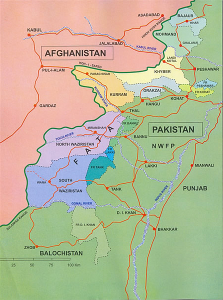Manned Flights Kill Civilians Too
NPR’s Kelly McEvers just released a story with some on-the-ground reporting on attacks in Yemen attributed to the US. She focuses closely on an attack on Jaar I’ve discussed before in the context of reports on Obama’s embrace of signature strikes in Yemen.
I noted, for example, that this strike happened as anonymous Administration sources seeded a bunch of stories about a Kill List, falsely suggesting that the Administration only killed people whose identities they knew.
There is absolutely no reason to believe, for example, that Obama–or even John Brennan–knew the identity of the up to 8 civilians who were killed by a drone in Jaar, Yemen, on May 15. All anyone knew about them, according to reporting, is that they ran out after an earlier drone strike to look at the impact site. Boom! They were never on any Kill List, but they are nonetheless just as dead as Quso is.
And they rolled out that campaign amid disputes about who was responsible for the attack–and whether it was carried out with drones or manned aircraft.
I find the competing stories being told interesting, particularly in light of questions about who leaked information on the latest Underwear Bomb “plot.” At first, a “government official” toldChina’s Xinhua news that the Yemeni military had executed the attacks.
Earlier in the day, a botched air strike carried out by Yemeni warplanes hit a residential building near a compound used by al- Qaida militants in the insurgents-controlled town of Jaar, killing at least eight civilians and injuring five others, a government official said.[my emphasis]
But later, “three Yemeni security officials” blamed the strikes on drones, not the Yemeni military.
Two suspected U.S. drone strikes killed seven al Qaeda militants and eight civilians in the southern part of Yemen on Tuesday, three Yemeni security officials said.
It was the latest of several U.S. strikes in Yemen, which is home to al Qaeda in the Arabian Peninsula, described by U.S. officials as the al Qaeda affiliate that poses the most serious threat to the United States.
At least seven civilians were injured in the Tuesday strikes, the officials said.
In other words, this attack seems like a royal fuckup that elicited some real spin on the part of the Administration to explain away.
Which is interesting, given that McEvers’ report–or at least the description of the sound of a plane, as distinct from a drone–seems to support the manned aircraft claims.
In Jaar, a town in southern Yemen, an entire block has been reduced to rubble by what residents say was a powerful airstrike on May 15.
[snip]
At this particular site, witnesses say the strikes rocked the town in the morning, just as many residents of Jaar were out buying breakfast. Residents say they heard a plane, and a house on the main street was flattened. One man inside died instantly. Read more →

